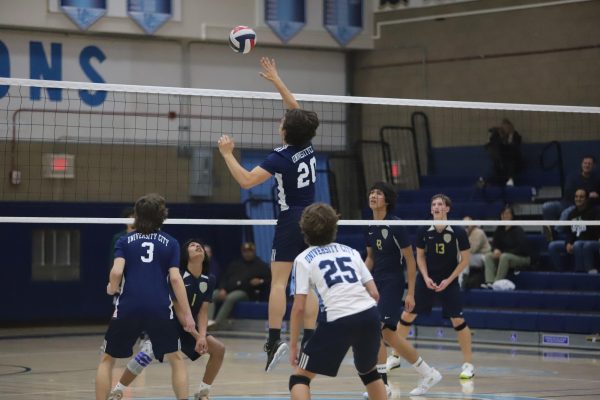High School Sports: Dangerous But Worth the Risks
June 10, 2016
Concussions. Brain Damage. Broken limbs. Are high school sports worth the injuries? They are. According to Southwest Athletic Trainers’ Association, high school athletes suffer 2 million injuries, 500,000 doctor visits and 30,000 hospitalizations each year (swata.org). But what athlete doesn’t know the reality that he or she may be injured during the season?
Sports including football, cheerleading, soccer, and lacrosse are considered to be very dangerous for various reasons, from possible head injuries to cardiac arrest. Many people, especially parents, are now stressing over the risks that high school student-athletes take (of being seriously injured) and want to pull teens out of sports such as football. Yeah, you can get a concussion playing football, but you can also get a concussion participating in everyday activities like skateboarding or falling off a bike. This isn’t a new concept, and most student athletes know the risks of playing in their desired sports. We have always known the dangers of sports, so why make a big deal out of them now?
According to a 306-page, NFL-funded report released by a leading medical body, “Across sports, 250,000 concussions were reported to emergency rooms in 2009 for people under age 19, up from 150,000 in 2001” (espn.go.com). The UC High Student Athletic Packet informs students about injuries such as concussions. It has two full pages of information about concussions, including symptoms and potential results if the concussion is not treated properly. Students should be able to recognize if they or another teammate gets a concussion. If a player does get a concussion, or even has symptoms of one, the school they attend must follow the “Return to Play” and “Return to Learn” guidelines. Guidelines are to be followed even if the doctor of the patient does not confirm that a concussion has occurred. California laws mandate that student athletes stop all play when a concussion occurs and the student may not return to full competition until he or she has been cleared by his or her own doctors (sandiegounified.org).
Recently, many articles have been published about how football specifically is very dangerous for brain health, which has led to less participation in high school. However, according to Stanford Physician and Medical Researcher Ed Riley, “The Mayo Clinic found that the risk of high school football players developing degenerative neurological diseases later in life is no greater than if they had been in the band, glee club or choir. The data suggests that the normal life of adolescents puts them at risk for brain injury all the time. Sports such as soccer, skiing, rock climbing or lacrosse have similar risk profiles to high school football…”(PortlandTribune.com). Thus, not only concussions, but injuries in general can easily be caused by more than just high school sports.
Most sports injuries in high school can be prevented with the proper conditioning, training and equipment. Not all injuries are caused by a single, sudden twist, fall or collision. Overuse injuries occur gradually over time: when an athletic activity is repeated so often, the parts of the body involved do not have enough time to heal between playing. When a player does get temporarily injured, the injury must be completely healed before he or she returns to sports activities to recover properly (orthoinfo.aaos.org). When a student-athlete gets injured, the student’s school will typically err on the side of caution and will follow the Return to Play guidelines in the interest of the athlete because, as many people say, “It’s better to miss one game than a whole season.”
Students know the risks and should be allowed to play any sport of their choice. Participation in high school sports is super fun, is a great way to make more friends with common interests, encourages decent grades through GPA requirements and teaches skills like leadership and teamwork. High school sports programs and student participation in them should not be sacrificed because of a perceived risk of physical injury.







